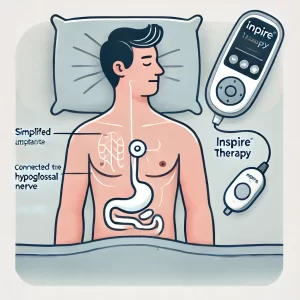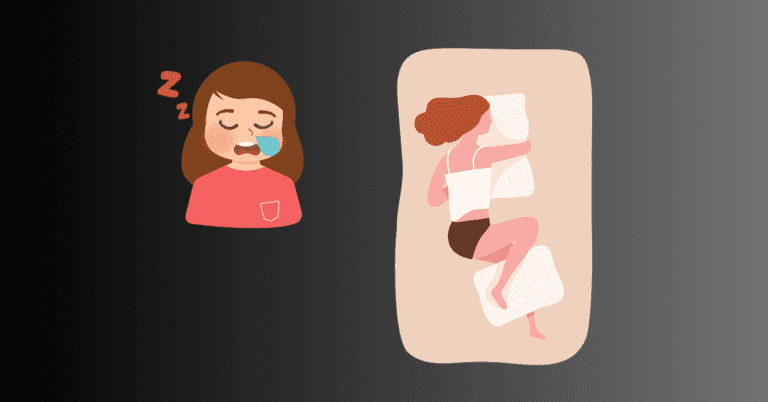Sleep Apnea Inspire Treatment: How it Works and What to Expect
Jeremy Smith is a long-term CPAP user and sleep apnea advocate. After being diagnosed with severe obstructive sleep apnea, he created ByJeremySmith.com to help others navigate CPAP therapy through personal stories, gear reviews, and practical advice.
This article will explore what Inspire therapy is, how it works, and whether it’s a good option for treating sleep apnea.
Sleep apnea is a serious sleep disorder that causes repeated interruptions in breathing during sleep, often leading to poor sleep quality and increased risks of health complications.

For many people like me, Continuous Positive Airway Pressure (CPAP) therapy is the standard treatment for obstructive sleep apnea (OSA). However, not everyone can tolerate or use CPAP effectively.
For these individuals, a newer treatment option called Inspire therapy may provide an effective alternative.
What Is Sleep Apnea?
Obstructive sleep apnea (OSA) is the most common type of sleep apnea. It occurs when the muscles in the throat relax too much during sleep, causing the airway to become blocked. This leads to frequent pauses in breathing (apneas), often followed by loud gasps or choking as the brain signals the body to wake up and resume breathing.
These repeated disruptions prevent individuals from entering deep, restorative sleep, leading to symptoms like excessive daytime sleepiness, difficulty concentrating, and an increased risk of heart disease, stroke, and other health issues.
What Is Inspire Therapy?
Inspire therapy, also known as hypoglossal nerve stimulation, is an FDA-approved treatment for obstructive sleep apnea that offers an alternative to CPAP for people who are unable to tolerate the traditional mask and machine.
Instead of delivering continuous air pressure, Inspire uses a small device that is surgically implanted in the body to stimulate the nerves controlling the tongue and throat muscles, keeping the airway open during sleep.
How Inspire Therapy Works
The Inspire system includes three main components:
- A small pulse generator is implanted in the upper chest.
- A breathing sensor lead is placed near the lungs to monitor your breathing patterns.
- A stimulation lead connected to the hypoglossal nerve, which controls tongue movement.
During sleep, the system monitors your breathing and stimulates the hypoglossal nerve to move the tongue forward, keeping the airway open and preventing obstructions.
Who Is a Candidate for Inspire Therapy?
Not everyone with sleep apnea is a candidate for Inspire therapy…
It is typically recommended for people with moderate to severe obstructive sleep apnea who have tried CPAP therapy but were unable to use it effectively.
So that’s me out!
Inspire is also considered for those who have undergone a sleep study confirming the diagnosis and whose body mass index (BMI) is within a certain range (usually less than 32-35).
To determine if you’re a candidate for Inspire, your doctor will evaluate:
- The severity of your sleep apnea is often measured by the Apnea-Hypopnea Index (AHI), which tracks the number of breathing disruptions per hour.
- Your anatomy, including the size and shape of your airway, which will be assessed through a procedure called a drug-induced sleep endoscopy (DISE).
- Your medical history, including any prior treatments for sleep apnea and other health conditions that might impact surgery or recovery.
The Inspire Surgery Process
Inspire therapy requires a minor surgical procedure, which is typically done on an outpatient basis.
The surgery involves implanting the three components of the Inspire system: the pulse generator in the chest, the breathing sensor near the lungs, and the stimulation leading to the hypoglossal nerve.
What to Expect During Surgery
- The procedure usually takes 2 to 3 hours.
- It is performed under general anesthesia, meaning you will be asleep during the operation.
- Most patients are able to go home the same day, although some may stay overnight for observation.
After the surgery, you’ll have a recovery period of about 2-4 weeks before the device is activated. During this time, your doctor will monitor your progress and ensure the surgical incisions heal properly.
Activating and Using the Inspire Device
Once you’ve healed from the surgery, your doctor will activate the Inspire device. You’ll receive a small handheld remote that allows you to turn the device on before bed and off when you wake up.
The remote also lets you adjust the stimulation settings to ensure comfort and effectiveness.
How Inspire Works During Sleep
- When activated, the Inspire device monitors your breathing patterns and delivers gentle pulses to the hypoglossal nerve as needed to move your tongue forward and keep your airway open.
- The device is designed to work only during sleep, so it won’t interfere with your daily activities.
- If you need to temporarily pause the device, such as if you wake up in the middle of the night, you can easily do so with the remote.
Benefits of Inspire Therapy
For individuals who are unable to use CPAP effectively, Inspire therapy offers several benefits, including:
- No mask or hoses: Unlike CPAP, there is no need for a mask or tubing, making it more comfortable for people who struggle with these elements of CPAP.
- Improved sleep quality: By keeping the airway open during sleep, Inspire therapy helps prevent apnea episodes, leading to more restful sleep and reduced daytime fatigue.
- Customizable treatment: The Inspire device is adjustable, allowing you and your doctor to fine-tune the stimulation settings for maximum comfort and effectiveness.
Many people report a significant improvement in their sleep and overall quality of life after starting Inspire therapy, particularly those who were unable to tolerate CPAP.
Potential Risks and Side Effects
As with any surgical procedure, there are risks and potential side effects associated with Inspire therapy. Some of the most common include:
- Soreness or swelling at the surgical site.
- Discomfort from the stimulation during the initial adjustment period.
- Nerve irritation or movement of the tongue that feels unusual.
Most side effects are mild and improve with time as you adjust to the device. However, as with any medical procedure, it’s important to discuss the risks with your doctor before deciding on Inspire therapy.
Will Inspire Be Covered by My Insurance?
The Inspire sleep apnea device is covered by most major insurance companies, including Medicare.
If Inspire isn’t specifically covered, it may be approved based on medical necessity on an individual basis. Inspire sleep apnea therapy is also available to veterans through the Federal Supply Schedule.
Seeking Help from Your Doctor
If you’re struggling with CPAP therapy or are looking for an alternative solution to manage your obstructive sleep apnea, it’s important to consult with a sleep specialist.
Inspire therapy is an option for those who cannot tolerate CPAP, but it requires a thorough evaluation to determine whether you’re a suitable candidate.
Your doctor can guide you through the process, from sleep studies and eligibility assessments to the Inspire surgery itself.
Remember, untreated sleep apnea can lead to serious health complications, so it’s essential to work with your healthcare provider to find the best treatment option for you.
Do you have any questions, comments, or stories about the Inspire treatment? If so, please share in the comments below.
Disclaimer: The content on this blog is for informational and educational purposes only and is not a substitute for professional medical advice. Always speak with your doctor or sleep specialist before starting, stopping, or changing any treatment or therapy related to sleep apnea or CPAP use.
Disclaimer: The content on this blog is for informational and educational purposes only and is not a substitute for professional medical advice. Always speak with your doctor or sleep specialist before starting, stopping, or changing any treatment or therapy related to sleep apnea or CPAP use.





